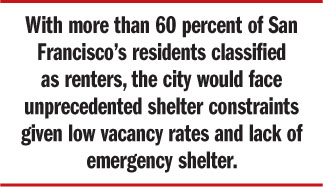In the wake of tragedies such as Hurricanes Katrina, Ike, Wilma and Irene, as well as the devastation wrought by the Japanese earthquake and unprecedented levels of wind events across the United States, experts have begun to consider the issues of urban resiliency—specifically concentrating on unique characteristics that either reduce or increase regional exposures and the ability to recover following a major event.
 Those communities demonstrating strong social capital, diverse economic bases, low levels of inequality and strong political leadership are most likely to emerge quickly from the effects of a large-scale event. In the case of New Orleans, few resiliency characteristics were evident prior to the disaster. Core industries were in a state of decline; highly concentrated populations of people lived below the poverty line; disparity in such areas as health care, education and home ownership were prevalent; and political vision and leadership proved ineffective.
Those communities demonstrating strong social capital, diverse economic bases, low levels of inequality and strong political leadership are most likely to emerge quickly from the effects of a large-scale event. In the case of New Orleans, few resiliency characteristics were evident prior to the disaster. Core industries were in a state of decline; highly concentrated populations of people lived below the poverty line; disparity in such areas as health care, education and home ownership were prevalent; and political vision and leadership proved ineffective.
Also crucial to the study of urban resiliency are regionally specific characteristics that look beyond traditional economic, demographic and political indicators. San Francisco, for example, exhibits relatively strong resiliency characteristics and would appear on the surface to bear little resemblance to areas of the Gulf Region affected by Hurricane Katrina. But a closer examination of post-loss scenarios may suggest otherwise.
Want to continue reading?
Become a Free PropertyCasualty360 Digital Reader
Your access to unlimited PropertyCasualty360 content isn’t changing.
Once you are an ALM digital member, you’ll receive:
- All PropertyCasualty360.com news coverage, best practices, and in-depth analysis.
- Educational webcasts, resources from industry leaders, and informative newsletters.
- Other award-winning websites including BenefitsPRO.com and ThinkAdvisor.com.
Already have an account? Sign In
© 2024 ALM Global, LLC, All Rights Reserved. Request academic re-use from www.copyright.com. All other uses, submit a request to [email protected]. For more information visit Asset & Logo Licensing.








